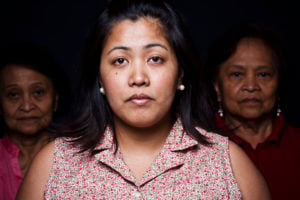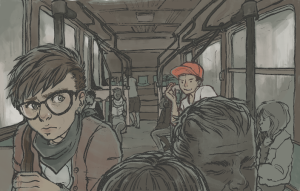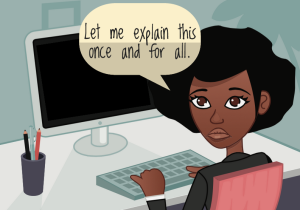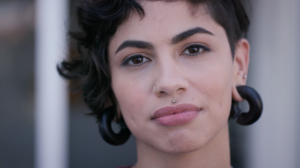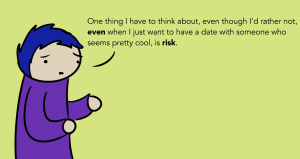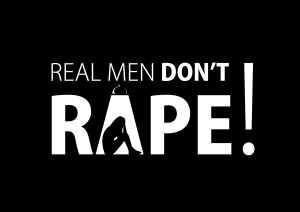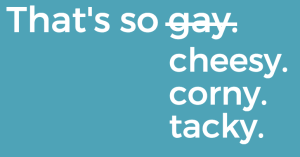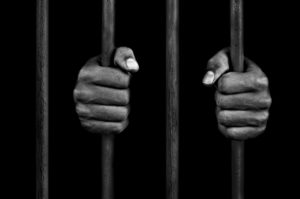
Two hands gripping prison bars.
(Content Note: Graphic descriptions of capital punishment)
While I identified as a pacifist for the majority of my youth, I never really questioned the morality or justness of the death penalty. In fact, with human rights being as socially valued as I was taught they were and contemporary forensics seemingly so advanced and absolute, I trusted the courts to only make that decision when it was necessary for our collective safety and protection.
I believed it would be reserved for the absolute worst, most irreformable serial murderers alive – never any one who hadn’t been proven completely guilty, who demonstrated accountability and tried to right their wrongs, who I could even consider feeling some sort of empathy or compassion towards, and, to be honest, who was violent enough to land on death row in the first place.
Further, I thought the death penalty was the only and most critical way to show care and support for the victims and the family of the victims targeted by violent murderers. I thought that it was justice. I thought that it was right.
While I still believe that the criminal justice system should revolve around healing and advocating for the victims of crime – as well as facilitating a social structure where the need for crime drastically decreases – my truth about the death penalty completely changed in 2005, just a few months before I would turn 22. This was the night that Stanley Tookie Williams, one of the founders of the legendary Crips gang, was executed by the state of California via lethal injection at San Quentin Prison.
Because Williams had touched so many people’s hearts through his anti-gang activism during the years before his death and because thousands of people were protesting his pending execution around the state and country – I did not actually believe he would be killed. Until he was.
He caused a lot of harm and danger and absolutely deserved to be held accountable for the violence that he engaged in and the violence he protected if he was, indeed, innocent of the murders. But the systems that created the circumstances which fostered and enabled his behaviors deserves far more scrutiny, change, and death than Williams – or any other individual person for that matter.
Why do we choose to murder the people who – albeit violently – struggle to navigate the system, who are many times just as much victim as they are perpetrator, rather than focus drastically changing the system that continuously and unwaveringly produces such behavior in the first place?
While the execution of Williams didn’t change anything in regards gang violence in our country, he, of his own volition, experienced a radical internal transformation and made choices that impacted human beings in a way that our court system refuses to do.
And he emerged from that isolated time of education and reflection declaring himself to now be a champion of peace, expressing strong remorse for the violence the Crips had waged across the country and for the lives that had been lost and permanently damaged as a result of that violence. He published an award-winning and comprehensive mass of anti-gang literature and media especially aimed at youth, spoke relentlessly against gang violence and intra-community crime in interviews, and even brokered multiple gang truces between the Crips and other gang organizations.
So, in every sense of the word, Williams’ transformation was the exemplification of justice at its best. While he couldn’t change the horrific harm he already caused, he was doing every thing in his power to interrupt, heal, and radically change the living consequences of his pre-incarcerated actions.
Consequently, it is clear to me that if our prisons, courts, and political leadership were actually invested in justice, reparations and eradicating criminal behavior, Williams could’ve, should’ve, would’ve easily been lauded a success story.
Unfortunately, that was not the case.
All appeals for his clemency, both those that his legal team filed and those campaigned on his behalf – including a petition requesting a temporary suspension of executions signed by over 175,000 Californians – as well as a four week stay as his defense found further proof to demonstrate his innocence, were rejected by the California courts and Governor Arnold Schwarzenegger.
Schwarzenegger claimed that regardless of all the anti-gang work, writing, and activism Williams undertook, his unwillingness to assert that he was guilty for the deaths of the four people with which he was charged paired with his expressed gratitude to Black Liberation activist George Jackson – who was shot dead by San Quentin officers in 1971, demonstrated that Williams was, indeed, not reformed and deserved the death penalty.
Schwarzenegger’s decision demonstrated that criminal reformation is actually indicative of subservient complacency and admittance to the state’s assessment, not action towards tangible accountability, redemptive initiative, or social justice leadership.
While the state spent millions of dollars on the death of Williams, it did nothing to actually decrease the situations that created Williams and so many other enactors of street violence and it did nothing to nurture or care for the families of the people who had been murdered.
I passionately want to exist in a world where I know that we can all can roam free, go about our daily lives, and follow all our dreams and potential without the threat of some horrific danger. Only the reality is that the death penalty just doesn’t accomplish that. Violence doesn’t end violence; it contributes to it.
In case the story above didn’t convince you, here are seven things you should know about the death penalty and why it is far more harm than help.
1. With the Death Penalty, There Will Always Be The Risk of Killing an Innocent Person
Since 1973, 156 people have been exonerated from death row and 347 from prison in general – 20 of whom were due to DNA evidence. These are innocent lives that were almost taken under the guise of our commitment to justice and crime prevention.
Though it was an average of 14 years that people lost because of a system that doesn’t work, some people spent almost 40 away. Away from their families and every one that loved them, that missed them, that needed them. Away from their future, all the people who could love them, all the incredibleness they could create.
Recently, researchers undertook a study to determine the percentage of people killed by the death penalty who might be innocent. They believe that 1 in every 25 people, 4.1%, are killed. Some people have been pardoned posthumously.
Even if our nation does believe that certain people should be killed by the death penalty, can we – in any sort of good consciousness – persist with it when it steals the lives of innocent folks? What if the next person is someone you love? What if it’s you?
2. Courts Have Proven Death Penalty Practices to Be Cruel and Unusual Many Times Throughout History
In the 1960s, US anti-death penalty activists began protesting how constitutional the death penalty actually is, arguing that it was cruel and unusual.
One of their arguments at the time was that the nature of sentencing was arbitrary and capricious, with the prosecutor and the jury having complete, unrestricted agency over whether someone lived or died. And given our histories with juries (tell me, again, why George Zimmerman is innocent and why Black people are 40% of incarcerated people, but only 13% of the US population?), I completely understand. As the courts tried to determine our values, the death penalty was on a 10-year hiatus, ending in 1977.
It wasn’t until the 1980s that it was voted unconstitutional for children 15 and under to get sentenced to die, though children 16 and up still can. And in 1986, the courts voted it unconstitutional to sentence neuroatypical people who are unable to understand the reason or reality of their punishment, though it’s argued that 5-10% of the people on death row currently have serious mental illness, and many were heavily medicated during their court case.
The electric chair is still used in some states, even after it took 17 minutes of electrocution for William Vandiver to die, or once 6-inch flames burst from the head of Jesse Tafero. The gas chamber is also still used, in which people experience a 10 minute dying process that feels like a heart attack. People can also still die by shooting squad and lynching. Y’all – legit lynching.
3. Victims Approach the Death Penalty in Many Different Ways
While some loved ones may absolutely want justice for their loved one in the form of retribution, many do not, and the death penalty takes away that option from them. For example, Aba Gayle, the mother of a murdered 19-year-old woman, talks about how she was initially consumed with desires for revenge against her daughter’s killer, but as she worked on her own healing, she eventually began to forgive him, even sending him a letter letting him know of her forgiveness 12 years later.
Lorraine Taylor, the mother of two 22-year-old twin sons who were killed while fixing their car, argues, “If the government really wanted to end the violence, it would take the millions of dollars it is wasting on the death penalty in California and use it for violence prevention for youth, rehabilitation, and victim services.”
These people, these parents and partners and siblings and friends, actually lost a person that they loved and cared about and shared a life with. The death penalty can’t bring that life back, can’t erase that pain.
But imagining a world where their loved ones didn’t die, a world where people worked hard to eradicate the circumstances that leads to senseless murder, a world where other people don’t have to experience the same pain they did – that holds space for healing. That holds space for a phenomenal, revolutionary new way of treating each other.
4. Death Row is Systemized Psychological Torture
While some people have lived on death row for almost 40 years, the average time between sentencing and execution is roughly 15 years. And within those 15 years, inmates unbearable psychological torture – a torture so horrific and distinct that it creates a psychological disorder that only impacts death row inmates.
Imagine the anxiety of never knowing when your time will end, if you will get exonerated, if you might find out you’ve got a stay 20 minutes from the execution, if this appeal will work, or the next one, or the next one, or the next one.
Imagine that the only control you have over this experience is whether you continue appealing or whether you give up and give in to your pending slaughter – which is often called referred to as legal suicide.
Imagine that loneliness, stagnation, and some unspecified end date is all you have to look forward to. That sort of unnecessary pain is absolute torture. And the reason why we have the death penalty is to keep people from treating others that exact way. What a violent oxymoron.
5. The Death Penalty Disproportionately Targets People of Color
On June 16th, 1944, 5’1″, 95 pound, 14-year-old, Black American George Stinney was convicted for the murder of two young white girls under the age of 11. After he joined a search party to find them, and told another person that he had spoken to them the day before, several white police officers spent hours interrogating him – including bribing him with an ice cream – until one of them emerged, saying he confessed to the murderers. The jury deliberated for 10 minutes before sentencing him to death.
George Stoney is a prime example of Black people’s experience with the death penalty in this country.
People of color make up 44.4 percent of the people who have been executed by the death penalty, and Black people, specifically, make up 34.5% of people executed and yet are only 12% of the population. Black and Native people have always been the most politically and criminally targeted people in this country, while simultaneously being the most economically and academically disenfranchised group of people here – which is exceptionally violent given that the US economy was built on Black chattel slavery and the thievery of Native lands.
And while 50% of homicide victims were Black as of 2011, only 15.3% of their murderers received the death penalty. White people, however, accounted for 75.6% of the victims whose murderers received the death penalty. Even in their deaths, white lives are more protected and privileged in this country.
Make no mistake about it, the prison industrial complex in general is disgustingly racist, and the death penalty is just another ways to take Black and Brown lives. Black people have the lowest median income in the country. This again feels like punishing the oppressed for being oppressed, and it needs to come to an end.
6. The Majority of Countries in the World Do Not Practice the Death Penalty
In 1948, the United Nations proclaimed that all humans had a right to life and began campaigning for all membered countries to drastically limit who got issued the death penalty, if not abolish it completely. As of now, all “first world” (a term that I perceive to be created from the lens of imperialistic, classist, white supremacist narcissism) countries, other than the United States, have banned the death penalty.
While I am not, in any way, a europhile, I do think it’s critical to note that European countries (none of which practice capital punishment), including those with high immigrant and poor and working class populations, have drastically lowered homicide rates than the United States. The death penalty does not discourage or address murder at all, but perhaps universal healthcare does, as preventing the stresses of poverty is crime prevention.
Maintaining the capital punishment while not addressing the impact of economic oppression and health seems to be a cruel and unusual way of targeting poor people and protecting the wealthy.
In the United States, 19 states join the 102 countries that have completely abolished the death penalty and the 32 who have abolished it in practice, all agreeing that no one has the right to take another person’s life. And in 2014, there were 72 Death Sentences, the lowest since 1976. Capital murder is becoming increasingly unpopular, and for good and just reason.
7. California and Nebraska Voters Have an Opportunity to Abolish the Death Penalty
In this upcoming election, both California and Nebraska voters have an opportunity to completely eradicate capital from their state’s future.
In California, voting for Proposition 62 means that death row inmates, and all future inmates who would have been convicted to death, will now be sentenced life in prison and will be forced to get prison jobs and pay increased restitution to the families of their victims.
In Nebraska, voters have Referendum 426, which will give them the opportunity to maintain Nebraska’s ban on the death penalty by voting no.
This is an incredible time for voters to save lives – to choose the kind of change that might be more victim-centered, to prevent innocent people and oppressed people from facing undue violence. What a gorgeous opportunity for us all.
***
We all deserve to be safe in our homes and communities, but when has capital punishment ever actually brought us safety? It hasn’t. It’s brought torture. It’s brought loss. It’s brought vengeance. But it hasn’t brought us safety.
It hasn’t created redemption or healing. And it hasn’t added positively to any of our lives.
It is cold blooded killing and nothing more.
And since when was killing ethical? And why is killing even an option when we know that most crime is a result of inequity, of pain, of a culture that uplifts and validates hierarchy, of social lies construed to make us crave power, privilege, and so much unnecessary wealth.
Shifting the oppressive, racist, classist infrastructure that creates communities dependent on crime-driven economies is what creates safety. Providing people opportunities to heal from the violence done to them is what creates safety. Interdependence, access, and the eradication of socially construed economic and political hierarchies is what creates safety.
Not the death penalty. That’s just state validated murder. And since the purpose of it is to discourage murder and other horrific crime – which it does not do – we need to put a permanent end to it.
And if you’re in California or Nebraska, you literally can.
[do_widget id=’text-101′]
Kathryn Snyder is a Senior Advisor for Tides and The Advocacy Fund, with expertise in the areas of c3/c4 legal compliance, lobbying, ballot measures, and criminal justice advocacy. As an advisor, Kathryn provides service, support, and guidance to a portfolio of fiscal sponsorship and philanthropic services clients. Kathryn is a member of the California State Bar and graduated with a Juris Doctor from University of San Diego School of Law where she was a member of USD Law’s nationally ranked Mock Trial team, President of the Black Law Students Association, and co-founder of USD Law’s Diversity Committee. Kathryn served on the Board of Directors for the San Francisco Lesbian, Gay, Bisexual, Transgender Community Center, as a CASA (Court-appointed special advocate), and is a member of black.seed, a black liberation collective. Prior to law school, Kathryn received a Bachelor of Arts in Sociology, Bachelor of Science in Human Development, and a Minor in Communication from University of California, Davis.
Vanessa Rochelle Lewis is the Senior Editor at Everyday Feminism. She is a queer, lush-bodied, Black, femme performance artist, writer, actress, educator, and Faerie Princess Mermaid Gangsta for the Revolution. She loves romantic songs, romantic films, romantic books, romantic conversations, romantic friendships, and writing long, vulnerable Facebook statuses (about romance). Speaking of Facebook, please add her here.
Search our 3000+ articles!
Read our articles about:
Our online racial justice training
Used by hundreds of universities, non-profits, and businesses.
Click to learn more





